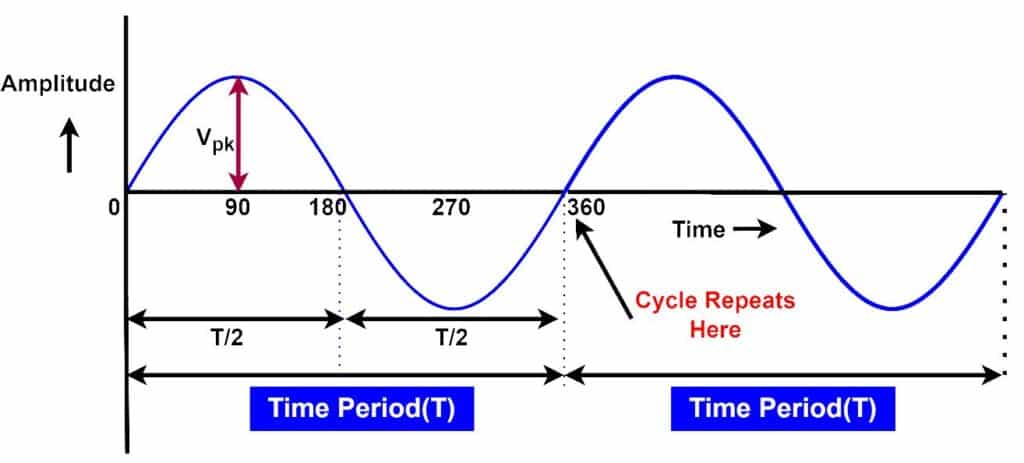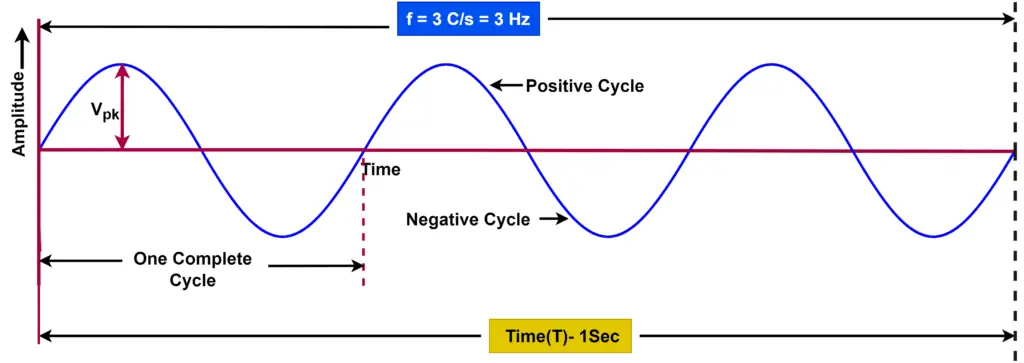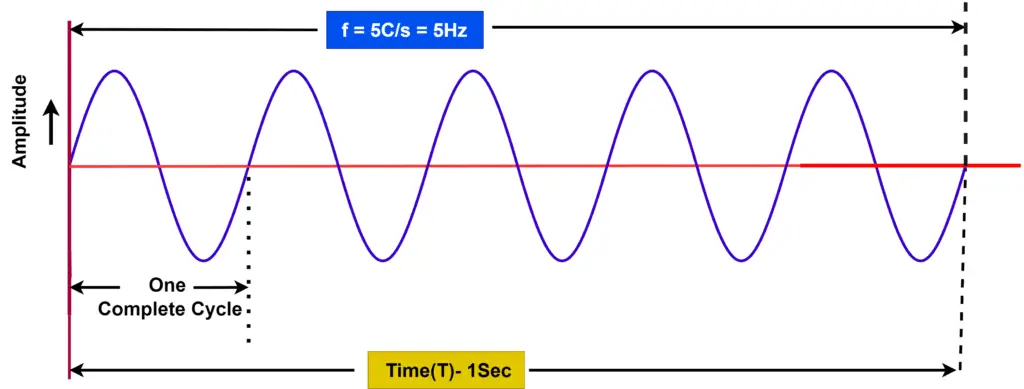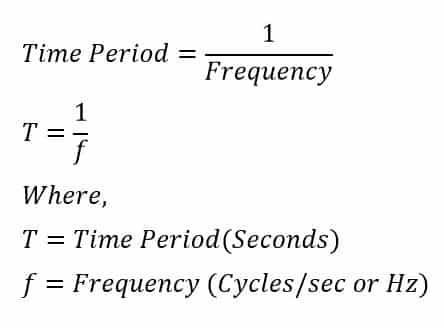In this article, we will discuss the difference between the time period and frequency of a wave. The time period is the time duration in which a wave completes one cycle. Whereas, frequency is the number of oscillations made by a wave in one second. The wave parameters’ frequency and time period are closely related to each other. These are very important parameters for studies of wave characteristics.
The oscillatory bodies have some force and energy. This energy causes a wave to move back and forth. Thus, this movement cause repeated wave motion. A wave starts from zero, attains a positive peak value, comes to zero, attains a negative peak value, and comes to zero. Thus, a wave completes one cycle. And, further, a wave repeats in the same fashion. In other words, oscillatory bodies produce a series of waves that is repetitive in nature, The repetitive nature of waves produces a periodic waveform.
The wave parameters, such as amplitude, time period, frequency, and phase are very important for studying of nature of a wave and its periodicity. Here, we will discuss the two important parameters time period & frequency of a wave.
Comparison Chart (Time Period and Frequency)
| Parameter for Comparison | Period | Frequency |
|---|---|---|
| Basic | Period is the time duration in which a wave completes one cycle. | Frequency is the number of cycles completed in one second. |
| Expressed by letter | T | f |
| Specified as | seconds/cycle | cycles/second |
| Measurement in | Time quantity | Rate Quantity |
| Unit | Seconds | Hertz |
Definition of Time Period
The duration or time period required by a wave to complete one cycle is called the time period of a wave. The letter ‘T’ denotes the time period of a wave. The wave repeats after completing its time period. The below figure shows the time period of a wave.

The x-axis shows the time and the Y-axis shows the amplitude of the wave. In the above diagram. the wave starts from 0 and completes its one cycle at 360. Thus the time taken by wave for a complete cycle is the time period(T).
If a wave completes 2 cycles in 4 seconds, then the wave completes its one cycle in 2 seconds. Thus, the time period of the wave is 2 seconds.
Example- If a wave completes 100 cycles in 5 seconds, then what is the time period of the wave?

Definition of Frequency
The rate of repetitions of a wave in a time frame is called frequency. If a wave completes one cycle in 1 second, then its frequency is 1 cycle/ second or 1 Hz. If the wave completes 5 cycles in one second, then its frequency is 5 cycles/second or 5 Hz. Therefore, we can say that the number of cycles or oscillations completed by a wave in one second is the frequency of a wave. The letter ‘f’ denotes the time period of a wave. The below figure shows the frequency of a wave.

In the above figure, the Y-axis shows the amplitude and the X-axis shows the time. The wave completes 3 cycles in one second, therefore the wave frequency is 3 cycles/second or 3 Hz.

In the above diagram, a wave completes 5 cycles in one 1 second, therefore its frequency is 5 cycles/second or 5 Hz.
Relation between Time Period & Frequency
The higher frequency has a lower time period and the lower frequency has a longer time period. Thus, the time period is inversely proportional to frequency. We can express the relation between frequency and time period by the following mathematical expression.

Now, we can summarize the key difference between time period and frequency.
Key Differences Between Period and Frequency
- The time taken by a wave to complete one cycle is called the time period. Whereas, the number of cycles in one second is called frequency.
- The time period is a time quantity and its measurement is expressed in time, whereas, frequency is the rate quantity that shows the rate of completion of cycles in one second.
- Time period and frequency have an inverse relationship(T=1/f). We express time period in seconds/cycle and frequency in cycle/second.
- The lower letter “f” express the frequency, and the upper letter “T” express the time period of a wave.
- The unit of time period is seconds, whereas the unit of frequency is c/s or Hz.